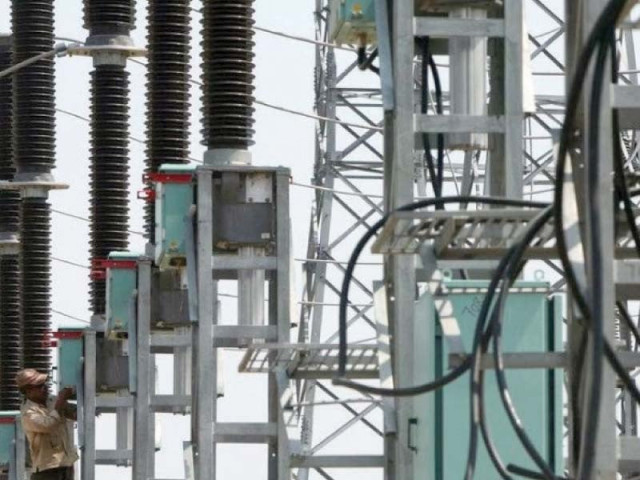The fallacy of competitive energy rates
Subsidisation of inefficiency fosters rent-seeking behaviour, impedes capital flow into efficient sectors such as IT

The interim government, in its recent policy move, opted to increase gas prices while rejecting the idea of eliminating subsidies for exporters.
Export subsidies have been a contentious and enduring issue in Pakistan’s economic landscape for a considerable span of time. The government’s tendency to extend these subsidies to the export sector, often dressed in the attire of tax relief and discounted energy price, has been a matter of some debate.
Advocates, including notable figures such as the current interim commerce minister, champion this strategy as a guaranteed method to boost exports and spur economic growth. However, it is imperative to recognise the substantial downsides entailed in the pursuit of such export subsidies.
One of the primary arguments in favour of these subsidies centres around providing the export sector with competitively priced energy rates. The reasoning is that by offering low-cost electricity and gas to the export sector, Pakistan can become more competitive in international markets.
This notion has been deeply ingrained in the national discourse over time. Yet, the reality is quite different.
The implementation of a fixed-rate approach through subsidies, particularly targeted at the export sector, has had detrimental effects on the economy. The practice of subsidising energy prices merely conceals the underlying reality of higher end-to-end production and transmission costs within the economy.
An often overlooked aspect of this equation is that the export sector does not exist in isolation. It operates within the same economy and shares the same infrastructure to obtain electricity, gas, or any other input. The elevated cost of energy is an immutable fact and cannot magically vanish.
Regardless of the subsidies given at various stages of the supply chain and inputs, the total cost of producing the same goods for the entire economy remains constant. If anything, these subsidies actually raise the overall economic cost.
Read Govt asked to find solutions to rising energy demand
The key distinction is that these subsidies shift the burden of energy costs from business owners to the general public, enabling businesses to reap profits they would not have otherwise obtained.
A consistent pattern of inadequate returns is the most telling indicator of economic inefficiency. Such patterns unequivocally signal a pressing need for the reallocation of resources.
Export subsidies contribute to resource misallocation and inefficiencies by directing resources to inefficient industries. This inadvertently neglects more efficient sectors, distorting the economic landscape and causing overproduction in subsidised industries.
Such subsidies sow distortions in trade and perpetually necessitate government assistance, a practice that is continuously observed and is ultimately unsustainable.
In practice, the government’s subsidisation of inefficiency fosters rent-seeking behaviour, which is a significant impediment to the flow of capital into efficient sectors, such as the information technology (IT) industry.
The government subsidies for exports have had a substantial fiscal impact. From FY20 to FY23, the government granted subsidies for electricity and liquefied natural gas (LNG) under the guise of an industrial support package and zero-rated industrial subsidies, totaling Rs339 billion.
A substantial portion of these funds was directed towards export-oriented, zero-rated industries. Given that the government operates as a net borrower, the cost of these subsidies, at the average interest rate, mounts to a colossal sum of Rs460 billion.
Read more Rs1.54tr in power subsidies sought
Additionally, the industry received Rs436 billion in financing through the Temporary Economic Refinance Facility (TERF). While the full details of the beneficiaries remain undisclosed, a substantial portion likely found its way into businesses aiming to bolster exports or promote import substitution.
The opportunity cost of this package continues to spiral upwards due to mounting interest rates, presently at Rs668 billion and still climbing. This encompasses the impact of financial subsidies allocated during the last 4.5 years alone.
It’s essential to also consider the foregone benefits. To place these figures into perspective, the cumulative cost of the industrial subsidy package and TERF, amounting to Rs1.1 trillion, would have been sufficient to finance the power generation project of the Bhasha Dam.
Alternatively, these resources could have been used to establish more than 40 hospitals similar to the Shaukat Khanum Cancer Hospital, build hundreds of top-notch IT universities, or fund 11,000 startups with Rs100 million each in funding.
These resources could have been directed towards enhancing the transmission efficiency, which would have effectively reduced the cost of electricity.
These are just a few examples to illustrate the opportunity cost. By focusing on export subsidies, the government is essentially prioritising an inefficient subset of a single sector over other critical aspects of the economy, hindering overall development and progress.
While often portrayed as a solution for economic growth, export subsidies continue to have a significant negative impact on Pakistan’s economy.
The notion of providing competitive energy rates and tax relief may be politically alluring, but the long-term ramifications are far from desirable.
While export subsidies may offer temporary relief to certain sectors, they come at a high fiscal and opportunity cost, distorting the economic landscape. It is essential for Pakistan to reconsider its approach to subsidies and focus on sustainable economic development based on productivity and efficiency to ensure a more stable and prosperous future.
The writer is a fellow of PRIME, an independent economic think tank based in Islamabad
Published in The Express Tribune, November 20th, 2023.
Like Business on Facebook, follow @TribuneBiz on Twitter to stay informed and join in the conversation.



















COMMENTS
Comments are moderated and generally will be posted if they are on-topic and not abusive.
For more information, please see our Comments FAQ